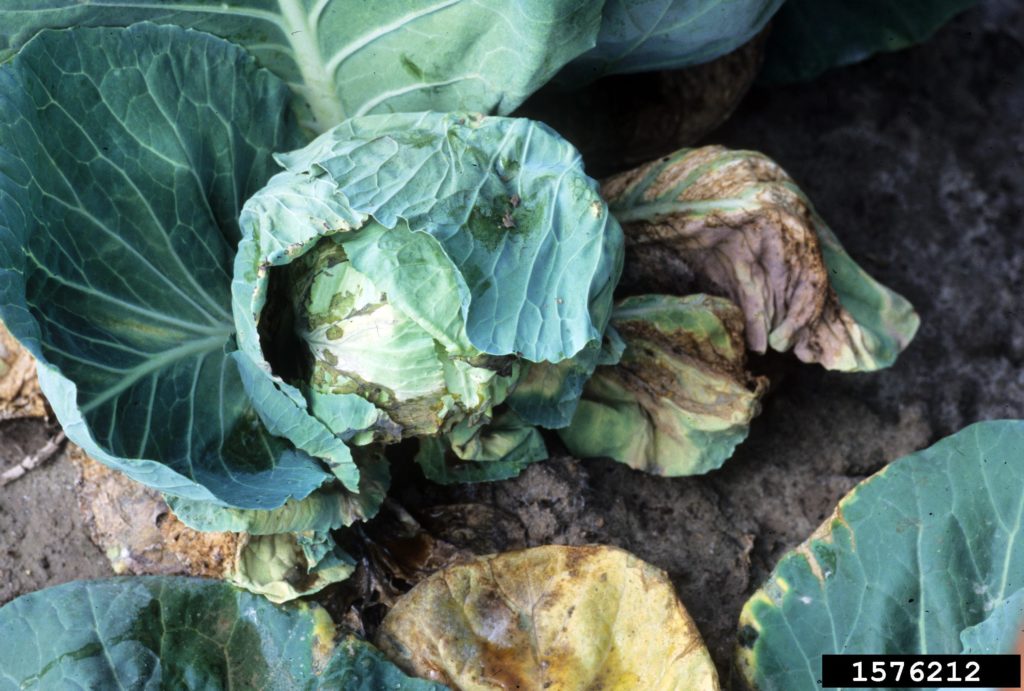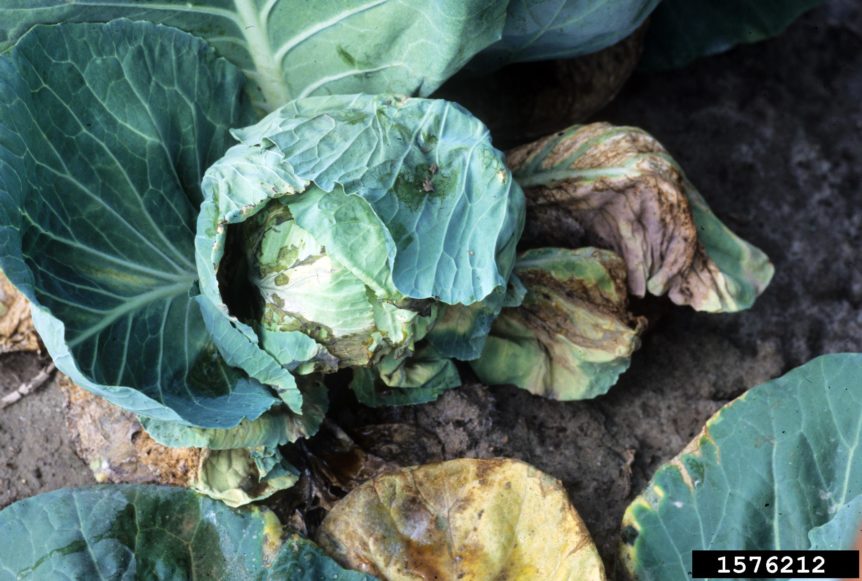
Photo by Gerald Holmes
By Frank Giles
Brassica crops have become an important crop in the Southeast. When it comes to disease management, black rot (Xanthomonas campestris pv. campestris) is one of the biggest problems that growers fight.

Black rot can affect all major brassica crops, including cabbage, broccoli, cauliflower, Brussels sprouts, collards and kale. The disease causes the most damage in the leafy brassicas (collards and kale) because it targets the edible, marketable portion of the plant the most. There are some partially resistant varieties of broccoli, and most hybrid cabbage are partially resistant.
Pervasive Problem
In some years, the disease can be worse than in other years. Black rot also can be worse in some fields than others, but the disease is pretty much spread across the Southeast. According to Tony Keinath, a vegetable pathologist with Clemson University, growers need to be vigilant, especially where brassicas are grown year-round like in South Carolina. Black rot is worst in the summer, fall and spring when temperatures are warmer.
“Anytime we have prolonged wet weather (more than 24 hours), we can see black rot pick up in fields,” Keinath says. “And after hurricanes, we often see black rot become an issue. That is mostly due to the wet weather associated with these storms, but I also think there could be some long-distance spread of the bacteria by the storm winds. For example, if we had a hurricane in the fall, we definitely could see more black rot the following spring.”
Top Management Tips
Keinath says there are not really any effective chemical controls for black rot. That means growers must rely on cultural practices to manage the disease.
“The two biggest things growers can do to try to mitigate black rot are crop rotation and starting with clean seed,” he says. “You need to rotate with any non-brassica crop like summer squash, tomatoes, cucumbers, peppers and sweet corn.”
One thing that makes the disease problematic is the bacteria’s ability to survive in crop debris from one crop to the next. So, that means crop rotation needs to account for crop debris decay. This can take time because black rot is systemic.
“This is not a pathogen that survives in the soil indefinitely, but the crop rotation needs to be long enough for the crop debris to decay, which can take about a year or more,” advises Keinath. “It is important to start your year-long countdown at the end of the crop, not from when you plant.”
Infected seed has been the biggest culprit of black rot spread, whether in a greenhouse or in the field. Keinath recommends growers consult with seed companies prior to purchase to ensure they screen seed for black rot presence.











